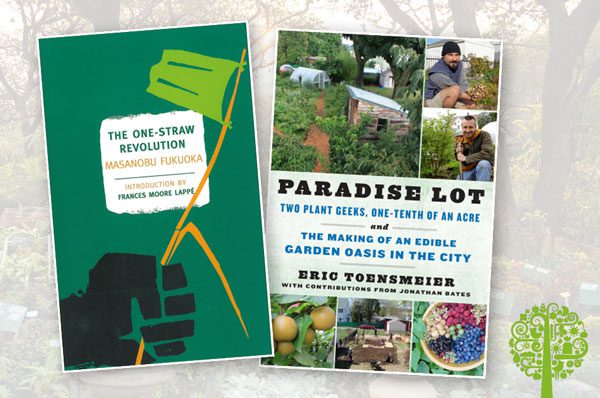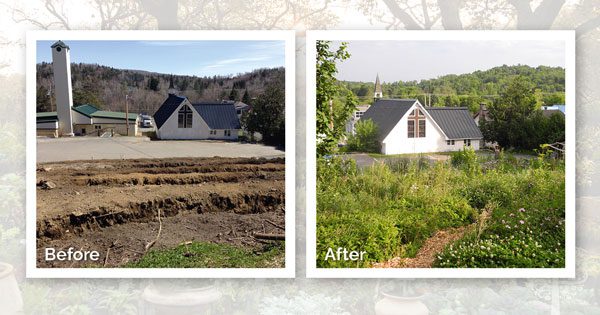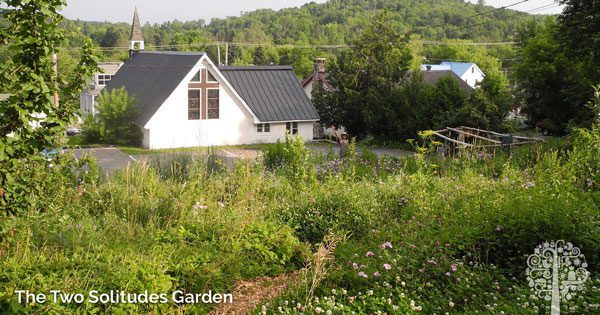In the real world of permaculture projects, sometimes, things don’t always go according to your plan. That’s ok; gardens, once planted, have a life of their own.
The Food Forest
A few years ago, a couple of friends and I thought how cool it would be to plant a food forest behind our town’s library on a gently sloping, abandoned field. We convinced the council to pay for a small excavator’s rental and buy enough rootstock to get started.

At the time, we were heavily influenced by the seminal book Paradise Lot, by Eric Toensmeier, and Sepp Holzer’s hugulkulture methods. Off we went digging swales and burying wood to create long, south-facing terraces.
In a spring frenzy with the blackflies and rain, we planted raspberries, apples, grapes, kiwi fruit, elderberries, haskap, chums, sea buckthorn, and hybrid nut trees like Buartnut and Hazel, and, of course, loads of Comfrey dug up from a nearby farm.
We practiced the seed bomb method from The One-Straw Revolution by Masanobu Fukuoka, making balls of clay impregnated with a myriad of vegetable, herb, and flower seeds – the result was an explosion of growth!
Fruits of Labor
It was amazing to pull out huge Daikon radish, carrots, and turnips surrounded by the tall flowering plants of a typical meadow. We named the space The Two Solitudes Garden – in homage to the sometimes complicated relationship between the French and English in the mainly French-speaking province of Quebec.

After the second summer and harvesting black, purple, and yellow raspberries and even some apples from a September Ruby with the kids from the nearby daycare, we were excited about the future.
Then, Disappointment
Unfortunately, it was decided the field would make an appropriate dumping ground for all the snow from the nearby parking lots. A winter’s worth of snow, rocks, ice, and road debris was blown onto our lovely young food forest.
That spring, surveying the damage, we decided to focus on caring for our battered food forest rather than dealing with the politics. This was one of those decisions made in the bureaucracy that seem harmless until seen in the real world. What could I have done better in this situation?
Communication is Crucial
Looking back, it was all about communication as well as observation. In today’s world, you might have to beg, borrow, and haggle to see your planting dreams come true. You might have to negotiate with the government or private landowners to complete a project. It will help if you have someone on your team who has these skills. I was not successful in selling the long-term vision of this food forest to the people who lived around it – they saw it as a messy field.
Observation, communication, and charisma are essential if we are to realize our vision of the world. Not everyone understands that a wild-looking food forest is actually a paradise for pollinators and birds and that patience is required to let such a garden mature out of its awkward youth.
Be a Storyteller
As permaculture projects created by volunteers increase across the globe, it is up to us gardeners to also be storytellers, to convince and integrate the people who live around the gardens to love them and participate.

Ultimately, unless paved over, the garden is in charge. When I go back to visit the Two Solitudes, it is clear how resilient food forests are. The fruit trees are all suckering, the raspberries are sweet, the grapes and arctic kiwi are fruiting, the nut trees are taking off, and even some Monarch butterflies live there; another paradise lot created with a life of its own!